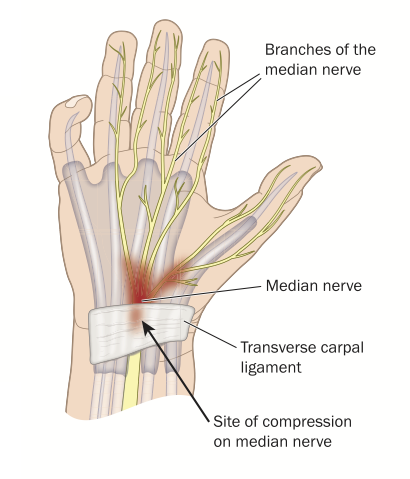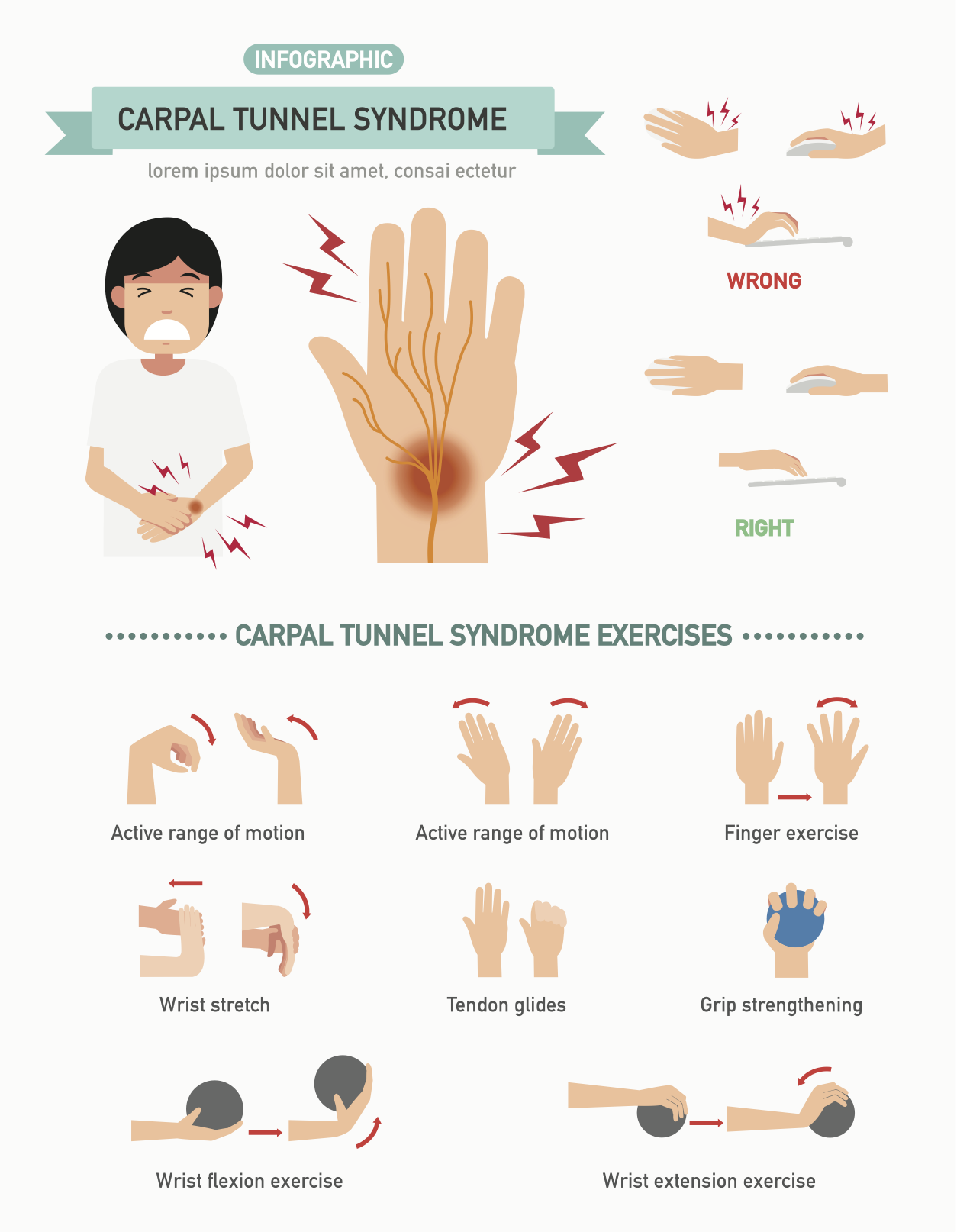Make an Appointment
Carpal tunnel Syndrome occurs in 2.7% of the Australian population with it being more common in women than men. The average age of people who have Carpal Tunnel Syndrome is from the age of 40-50 years.
Risk Factors For Carpal Tunnel syndrome Include:
- Menopause
- Wrist trauma or injury
- Small carpal tunnel
- Hereditary
- Overuse
- Rheumatoid arthritis & other joint related issues.
- Older age.

If you have the carpal tunnel syndrome, it may look like that surgery is the only solution. But what if we tell you that there are a few different treatment options you could take to postpone the surgery and continue having a good quality of life.
1. It’s good to give your wrists some rest once in a while
Carpal tunnel syndrome is an outcome of excessive write motion, so just giving some rest to your wrists would do the magic. Try to keep your wrists in a neutral position as much as you can.
2. Switch to ergonomic workstation
Even though there's no definitive evidence to suggest that repetitive wrist motion is one of the reasons for carpal tunnel syndrome, but it can certainly raise the stakes. To avoid stressing your wrists, try to keep your wrists straight which you could do by placing your keyboard and mouse at the right height.
3. Elevate your hands during sleep
Rest your hands on pillows while sleeping on your back. This could be done by propping your wrists on the pillows. This really helps, try it.
4. Ice therapy works
If you want to reduce the inflammation resulting from carpal tunnel syndrome, try icing the wrists. The cold therapy session could last 10-15 minutes, so remember to use some towels to protect your skin.
5. Use a wrist brace
Using a wrist brace will stabilize the wrist and reduce carpal tunnel pain. There are different types of braces available so try the ones that are structured and firm and will immobilize the wrists. Consult with your Doctor or Physiotherapist.
6. Do wrist exercises
Do you know that there are a dozen different wrist exercises that you could try, why not check out this blog of ours [add a link to the wrist exercises blog] on wrist exercises?
7. Try NSAID medication
You could try naproxen or ibuprofen as anti-inflammatory pain medications are very effective to reduce the symptoms of carpal tunnel syndrome.
8. Keep your hands warm
Cold conditions could cause stiffness and aggrandize the symptoms of carpal tunnel syndrome. If you have to work in a cold environment, better get some fingerless gloves on.
9. Talk to your doctor or physiotherapist
Getting professional help is always a safe bet when you have carpal tunnel syndrome. Your physician could recommend you different nonsurgical treatments like oral corticosteroids or cortisone injections in the carpal tunnel.
Additional & Specific Carpal Tunnel Syndrome Exercises

These aforementioned self-care techniques are tried and tested, and they do bring relief. But also remember that having a surgery for carpal tunnel syndrome is another successful way to fix the pain
If you think you are suffering from carpal tunnel syndrome or having experienced no relief from the exercises and treatment strategies outlined in our article, we recommend that you consult your local Physio Inq Physiotherapist today
Date Published: Monday, June 11, 2018
Locate a Aged Care Physiotherapy
Service Near me
Get the experience & convinence you deserve to support your or a loved one's allied health needs.
Our Aged Care Physiotherapy team are currently serving & taking appointments in the following states and regions in Australia:
Need to get into direct contact with ur Client Services team? We're all ears. Call our team directly on 1300 731 733


















